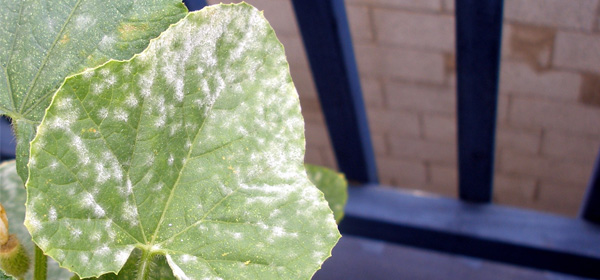 Story by Char VandermeerOne of the upsides to container gardening is that crops are less likely to succumb to soil-borne illnesses. Unlike traditional farmers and gardeners, container gardeners have the option of starting with fresh, sterile soil each year. If last year’s crops lost the battle against blights, wilts or mildews, then it’s smart to ditch the dirt, sterilize some containers, and start anew. Sadly, that’s rarely enough to keep a garden hale and hearty—every year, it seems as though my garden gets hit with one affliction or another, despite the clean dirt. Prevention is paramount, but when that doesn’t work, witches’ brews and sacrifices to the garden gods are in order.
Story by Char VandermeerOne of the upsides to container gardening is that crops are less likely to succumb to soil-borne illnesses. Unlike traditional farmers and gardeners, container gardeners have the option of starting with fresh, sterile soil each year. If last year’s crops lost the battle against blights, wilts or mildews, then it’s smart to ditch the dirt, sterilize some containers, and start anew. Sadly, that’s rarely enough to keep a garden hale and hearty—every year, it seems as though my garden gets hit with one affliction or another, despite the clean dirt. Prevention is paramount, but when that doesn’t work, witches’ brews and sacrifices to the garden gods are in order.
Diseases need a few things in order to wreak their havoc: a host (the plant), a pathogen (air‑, seed- or soil-borne) and favorable conditions (like damp environments).
Blights, especially, are tricky buggers, and tomatoes and potatoes especially willing hosts. Revealing itself months after the initial infection, as summer temperatures reach their peak, early blight causes lower leaves to yellow and fall off. Late blight—the villain of the Irish Potato Famine—typically occurs (paradoxically) early in the season and can kill a plant overnight. Game over. Mildews, which produce a felt-like webbing on leaves, are especially fond of warm, humid days and can thrive on just about everything, with cucumbers and melons particularly susceptible.
Taking preventative steps early increases your chance of avoiding sad outcomes. First, choose crops carefully. While heirlooms are lovely, disease-resistant hybrids may be a better bet for container gardeners, especially newbies. (Or, say, those who are tired of playing beat-the-reaper.) Next, patiently wait until soil temperatures reach 60 to 70 degrees before allowing cucumbers, melons, and tomatoes to hit the dirt: Cool temperatures encourage fungal growth. Make sure there’s enough room between plants for adequate air circulation, and always apply water directly to the well-mulched soil, avoiding dousing any part of the plant itself. With that in mind, it’s also best to water in the morning or late afternoon to protect plants from late summer’s swelter, as evening watering can encourage fungal growth. Mulching also helps prevent splash-back onto leaves, which are happiest dry. Don’t play with your plants while the leaves are still wet, to avoid spreading infection.
Pull out the potions as a last resort. For about $10, you can combat fungi, blight, mildew and insect pests with concentrated Neem oil, available at nurseries. Or, make your own mildew- and fungi-fighting brew: Combine 2 cups water, 2 cups skim milk, ¾ tsp. baking soda and ¾ tsp. non-detergent dish soap in a large spray bottle. Spray your plants, making sure to hit the undersides of the leaves, once a week and after rainfall.
If all else fails, it’s time to sacrifice the victims to the garden gods. Isolate diseased plants from healthy ones, snipping off and discarding diseased leaves, and nursing whatever yield you can out of the remaining plant. Once you’ve eked out what you can, it’s time to yank the damned and doomed, wash your hands, tools and containers, and try, try, again.
Char Vandermeer tends a container garden on her South Philly roof deck; she chronicles the triumphs and travails at plantsondeck.com



